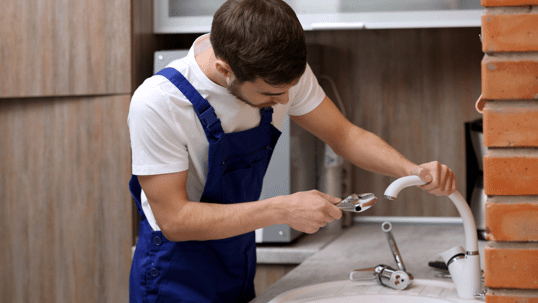Are you tired of that leaky faucet or want to update the look of your bathroom or kitchen? It may be time to replace your faucet. However, it can be overwhelming to choose the right faucet and install it correctly. As plumbing experts, we want to provide you with some information and tips to make the process smoother. In this blog post, we will highlight some signs that it's time to replace your faucet, discuss the different types of faucets and their benefits, and provide you with some expert advice for installation.
Signs It's Time to Replace Your Faucet
The first sign that it's time to replace your faucet is visible wear and tear. If your faucet is rusted, discolored, or has noticeable water stains, then a replacement is likely needed. Another sign that it's time for a faucet replacement is water leaks that are hard to fix or persist even after repair attempts. Additionally, if you want to update your home's aesthetics or improve the functionality of the faucet, then it may be time for a new one. In summary, if your faucet is damaged, leaking, or outdated, you should consider a replacement.
Types of Faucets and Their Benefits
There are numerous types of faucets available for kitchen and bathroom use. Single handle faucets offer a simple and convenient option for temperature and water control. Two-handle faucets provide separate controls for hot and cold water, making them classic and familiar. Touchless faucets, or those that don't require physical contact, are convenient and easy to use in high-traffic areas. Finally, wall-mounted faucets add sleek aesthetics and functionality by conserving counter space and providing easier cleaning opportunities. Understanding the benefits of each type of faucet can help you choose the right one for your needs.
Expert Advice for Installation
Installing a new faucet can be tricky, especially if you aren't familiar with plumbing basics. The first step should be turning off the water supply and testing to ensure that no water is flowing. After that, follow the manufacturer's instructions carefully. We recommend using the proper tools and hardware to prevent any leaks and damage. Moreover, it's always a good idea to consult a plumbing expert or professional if you're unsure about how to proceed.
Conclusion
Replacing your faucet can improve the aesthetics, functionality, and value of your home. Understanding when it's time for a replacement and the different types of faucets available can make the process easier. Moreover, expert advice for installation can ensure that your new faucet is installed correctly, which can save you money from having to fix leaks and damage. If you're ready to update your faucet, reach out to our plumbing experts who can guide you through the process and provide excellent service.

